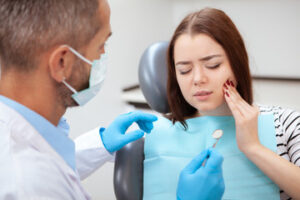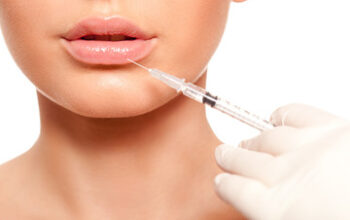If you’re experiencing severe pain or a dental injury, it may be time to see an emergency dentist. However, it’s important to distinguish between a real emergency and a situation that can wait a day or two.
Knowing the difference can save you time and money, as well as prevent future complications. Click https://bocadentallasvegas.com/ to learn more.

Tooth pain is one of the most common reasons to seek emergency dental. It can be caused by tooth sensitivity, gum infection, or even a serious dental condition like a cavity. It can be sharp and intense or dull and persistent, but no matter how it feels, a toothache is always a sign that something is wrong that needs to be treated immediately.
While not every dental problem is a dental emergency, you should still visit your dentist as soon as possible to avoid a more serious dental issue down the road. Some symptoms that indicate a dental emergency include severe toothache, unexplained bleeding from the gums, and jaw or head pain. If you have a fever or chills, high blood pressure, or a facial rash linked to your toothache, it is important to seek medical care as this may be a sign of more widespread infections that need more treatment than oral medication.
If you have a toothache, rinse your mouth with warm saltwater and use dental floss to gently remove any food debris caught between your teeth. You can also try a cold compress on your cheek to help relieve the pain and reduce swelling. You can also take an over-the-counter pain reliever, such as ibuprofen, to help manage the discomfort until you can see your dentist for more serious treatment.
If you have a knocked-out tooth, keep it in a sealed jar of milk or saliva or a dental preserving product if that isn’t possible. Be sure not to touch the root of the tooth, as this could damage it further. You can also place the tooth in a cup of water or milk to keep it moist until you can get to your dentist. Try not to disturb the knocked-out tooth as much as possible, and do not attempt to push it back into your gums or roots. This can cause further damage and increase your chances of losing the tooth permanently. If you are having trouble sleeping due to a toothache, try a mild dose of an antidepressant or sedative until the pain subsides.
If you ever find a chipped tooth, whether small or large, it should always be addressed. Tooth chips can happen as a result of chewing hard foods, accidents like blows to the head or contact sports injuries, grinding your teeth (bruxism), and even as the result of an accident in which you are hit in the mouth with something hard, such as a bottle cap or piece of pottery. These dental emergencies can range from being unnoticeable to excruciatingly painful and will require a visit to your dentist as soon as possible for treatment.
Most people who have a minor chip don’t feel or notice it. However, if you experience pain or sensitivity to hot or cold liquids or chewing food, it is most likely because the inner nerves of your tooth are exposed due to the break. This is why it is essential to schedule an appointment as soon as you can for emergency dental to prevent further complications like infection and to get a quick solution to your pain.
If the chip is very small and doesn’t expose the inner layers of your tooth, then there’s a good chance that it will heal itself naturally, a process called remineralization. However, this doesn’t apply to all broken teeth, and it is important to book in with your dentist as soon as you can for an examination and a decision on the best course of action.
In more severe breaks, where the crack goes through the biting surface of your tooth, the most common treatment is root canal treatment, followed by a dental crown to strengthen and protect the tooth. If the break is so bad that it exposes the root, then a dental extraction will probably be needed.
Taking over-the-counter pain relievers like ibuprofen and applying an ice pack to your cheek outside of the affected area will help diminish any discomfort. Rinsing with salt water can also provide pain relief and remove any trapped food particles to reduce the risk of infection. In the meantime, you can use a piece of sugarless gum or paraffin wax to cover any jagged edges on the damaged tooth to protect your tongue and lips from cuts until you can see a dentist.
Infections of the gums or tooth roots can lead to serious dental conditions, such as a dental abscess. The swollen area or “pimple” is filled with pus and usually causes pain, a bad taste in the mouth, and a fever. If left untreated, the infection can spread to surrounding tissues and bone, causing serious health complications. The most serious of these is sepsis, a life-threatening condition that can occur when the bacteria spreads to the bloodstream and the brain.
Although tooth infections can be dangerous, if they are treated immediately, they can often be prevented from spreading. A dentist can drain an abscess and prescribe antibiotics to prevent the infection from progressing to a more serious stage.
Tooth decay, gum disease, or injuries to the mouth are all common causes of a tooth infection. Injuries can happen while playing sports, working, or engaging in rough play at home. If a crack or chip in a tooth is caused by an accident, it is important to contact a dentist as soon as possible to prevent the damage from worsening.
Unless a cracked or broken tooth causes a lot of bleeding or happens as a result of a violent injury, it is unlikely to be considered a dental emergency. A cracked or broken tooth should be gently rinsed with lukewarm water, and a cold compress placed on the face to reduce swelling and pain. If you can retrieve the piece of broken tooth, put it in milk and schedule an appointment with your dentist as soon as possible.
In general, most ERs don’t have dentists on staff and do not have dental x-ray equipment. However, they can provide medication to reduce pain and help with swelling. If the pain is severe or interferes with breathing or swallowing, you should visit an emergency room.
A broken jaw is a severe injury and requires medical treatment. You can prevent your jaw from moving too much by holding it gently in place with your hands on the way to the emergency room. It is important to continue supporting the jaw until a dentist can examine it.
You can recognize a broken jaw by bruising around the mouth and swelling of the face and neck. You can also feel a lump in the area of the lower jaw and may have trouble opening or closing your mouth. The chin or lip may feel numb due to damage to a nerve that runs through the mandible.
The most common cause of a broken jaw is violent contact with another person, such as in an accident or during a fight. However, this type of injury can also occur at work or while playing a sport. Men are three times more likely to suffer a fractured jaw than women. People between the ages of 20 and 29 are more susceptible to breaking their jaws because they engage in riskier behavior, such as taking part in reckless sports activities.
When you arrive at the emergency room, your doctor will ask how the injury occurred and perform a physical examination of the jaw and face. They will also take X-rays of the jaw to determine the extent of the break. Depending on the severity, your doctor may prescribe pain medication or a jaw wiring procedure to help hold the jaw in place as it heals.
After a break or dislocation, it is important to maintain proper nutrition and hydration. You should eat soft foods and only drink liquids to avoid chewing on the injured area. A doctor may also recommend avoiding yawning for a few days to prevent extreme movements of the jaw that could delay healing or make the situation worse.
In severe cases, your oral surgeon might use surgery to treat a broken jaw. This involves placing metal plates or bars in the area of the fracture to support the jaw and ensure that it heals correctly. In addition, the surgeon might use screws to keep the jaw closed during recovery.

